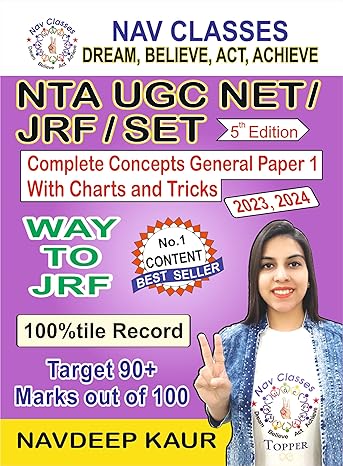Structure of higher education in India
In the Indian system, higher education includes the education imparted after the 10+2 stage – ten years of primary and secondary education followed by two years of higher secondary education.
The first degree, the Bachelor’s degrees, is obtained after three years study in the case of liberal arts, and four years in the case of most professional degrees (four and half in case of medicine and five/six years in case of law}.
The Master’s program is usually of two years duration.
The research degrees (M.Phil and Ph.D) take variable time depending upon the individual student.
The postgraduate degree programs involve 2 years of study after first degree. These include M.Tech, MD, MS and MDS programs that take 2 years after B.Tech and MBBS/BDS respectively.
The M.Phil. program, is of one and-half year duration. It is a preparatory program for doctoral level studies.
PhD program is research study for 2 years and can take several years while D.Sc. and D.Litt. are awarded by some universities after PhD for original contributions.
भारत में उच्च शिक्षा की संरचना
भारतीय प्रणाली में, उच्च शिक्षा में 10 + 2 अवस्था के बाद दी गई शिक्षा भी शामिल है – प्राथमिक और माध्यमिक शिक्षा के दस वर्ष बाद दो साल की उच्च माध्यमिक शिक्षा
पहली डिग्री, बैचलर डिग्री, उदार कला के मामले में तीन साल के अध्ययन के बाद प्राप्त की जाती है, और अधिक पेशेवर डिग्री के मामले में चार वर्ष (दवा के मामले में चार और आधे और कानून के मामले में पांच / छह साल)।
मास्टर कार्यक्रम आमतौर पर दो साल की अवधि का होता है
शोध डिग्री (एम.फिल और पीएचडी) व्यक्तिगत छात्र के आधार पर चर समय लेते हैं।
स्नातकोत्तर डिग्री कार्यक्रमों में पहली डिग्री के बाद 2 साल का अध्ययन शामिल है। इनमें एम। टेक, एमडी, एमएस और एमडीएस कार्यक्रम शामिल हैं जो क्रमशः बीटेक और एमबीबीएस / बीडीएस के 2 साल बाद लेते हैं।
एम। फिल। कार्यक्रम, एक और डेढ़ साल की अवधि का है। यह डॉक्टरेट स्तर के अध्ययन के लिए एक प्रारंभिक कार्यक्रम है।
पीएचडी कार्यक्रम 2 साल के लिए अनुसंधान अध्ययन है और कई सालों तक ले सकता है, जबकि डी.एससी। और डी। लिट मूल अंशदान के लिए पीएचडी के बाद कुछ विश्वविद्यालयों द्वारा सम्मानित किया जाता है।
In addition to the degree programs, a number of diploma and certificate programs are also available in universities. Their range is wide and they cover anything from poetics to computers. Some of them are undergraduate diploma programs and others postgraduate programs. The duration varies from one year to three years.
Universities, deemed universities and institutions of national importance are largely autonomous institutions entitled by law to design, develop and offer programs which they consider relevant and appropriate for the national needs. Colleges and other institutes in turn, are expected to be regulated by the Universities with which they are affiliated or associated. Given the wide reach and variety of institutions and programs of higher education, a number of professional, regulatory bodies and councils have been established to ensure proper development of higher education in the country in a coordinated manner.
डिग्री कार्यक्रमों के अतिरिक्त, विश्वविद्यालयों में कई डिप्लोमा और प्रमाण पत्र कार्यक्रम भी उपलब्ध हैं। उनकी सीमा चौड़ी है और वे कविताओं से कंप्यूटर तक कुछ भी कवर करते हैं। उनमें से कुछ स्नातक डिप्लोमा कार्यक्रम और अन्य स्नातकोत्तर कार्यक्रम हैं। अवधि एक वर्ष से तीन साल तक होती है।
विश्वविद्यालयों, मानी गई विश्वविद्यालयों और राष्ट्रीय महत्व के संस्थान काफी हद तक स्वायत्त संस्थान हैं जो राष्ट्रीय आवश्यकताओं के लिए प्रासंगिक और उपयुक्त मानी जा रहे कार्यक्रमों के डिजाइन, विकास और प्रस्ताव पेश करने के लिए कानून द्वारा हकदार होते हैं। कॉलेजों और अन्य संस्थानों के बदले में उन विश्वविद्यालयों द्वारा विनियमित होने की उम्मीद है जिनके साथ वे संबद्ध या संबद्ध हैं। उच्च शिक्षा के विभिन्न संस्थानों और कार्यक्रमों की व्यापक पहुंच और विविधताओं को देखते हुए, एक समन्वित तरीके से देश में उच्च शिक्षा के उचित विकास को सुनिश्चित करने के लिए कई व्यावसायिक, नियामक निकायों और परिषद स्थापित किए गए हैं।
Technical Education Overview
Technical Education plays a vital role in human resource development of the country by creating skilled manpower, enhancing industrial productivity and improving the quality of life. Technical Education covers courses and programmes in engineering, technology, management, architecture, town planning, pharmacy and applied arts & crafts, hotel management and catering technology.
The technical education system in the country can be broadly classified into three categories – Central Government funded institutions, State Government/State-funded institutions & Self-financed institutions.
तकनीकी शिक्षा का अवलोकन
कुशल जनशक्ति बनाने, औद्योगिक उत्पादकता बढ़ाने और जीवन की गुणवत्ता में सुधार करके तकनीकी शिक्षा देश के मानव संसाधन विकास में महत्वपूर्ण भूमिका निभाता है। तकनीकी शिक्षा इंजीनियरिंग, प्रौद्योगिकी, प्रबंधन, आर्किटेक्चर, टाउन प्लानिंग, फार्मेसी और एप्लाइड कला और शिल्प, होटल प्रबंधन और खानपान तकनीक में कोर्स और प्रोग्राम को कवर करती है।
देश में तकनीकी शिक्षा प्रणाली को मोटे तौर पर तीन श्रेणियों में वर्गीकृत किया जा सकता है – केंद्र सरकार के वित्त पोषित संस्थान, राज्य सरकार / राज्य-वित्त पोषित संस्थान और स्व-वित्त संस्थान
MHRD Funded Technical Institutions
The technical education system in the country can be broadly classified into three categories – Central Government funded institutions, State Government/State-funded institutions & Self-financed institutions. The Centrally funded institution of technical and science education are as under:
| Indian Institute of Technology (IITs) | 16 |
| Indian Institute of Management (IIMs) | 13 |
| Indian Institute of Science (IISc) | 1 |
| Indian Institute of Science Education and Research (IISERs) | 5 |
| National Institute of Technology (NITs) | 31 |
| Indian Institute of Information Technology and Management (IIITMs) | 4 |
| National Institute of Technical Teacher’s Training & Research (NITTTRs) | 4 |
| Others (SPA, ISMU, NERIST, SLIET, NITIE & NIFFT, CIT) | 9 |
| Total | 82 |
Besides the above, there are four Boards of Apprenticeship Training (BOATs).
The Central Government is also implementing the following schemes/programmes: –
(i) Technical Education Quality Improvement Programme (TEQIP) assisted by the World Bank.
(ii) Indian National Digital Library for Science & Technology (INDEST).
There is one Public Sector Undertaking, namely, Educational Consultants India Ltd. (Ed.CIL) under the Ministry. There are also Apex Councils, namely the All India Council for Technical Education (AICTE) and Council of Architecture (COA).
केंद्र सरकार निम्नलिखित योजनाओं / कार्यक्रमों को भी लागू कर रही है: –
(i) विश्व बैंक द्वारा सहायता के लिए तकनीकी शिक्षा गुणवत्ता सुधार कार्यक्रम (टीईक्यूआईपी)।
(ii) विज्ञान और प्रौद्योगिकी इंडियन नेशनल डिजिटल लाइब्रेरी (इंडेस्ट)।
मंत्रालय के तहत एक सार्वजनिक क्षेत्र की उपक्रम है, अर्थात् शैक्षिक कंसल्टेंट्स इंडिया लिमिटेड (एडीसीआईएल)। एपेक्स काउंसिल भी हैं, अर्थात् अखिल भारतीय तकनीकी शिक्षा परिषद (एआईसीटीई) और आर्किटेक्चर काउंसिल (सीओए)।
Living in India
Living in India is very inexpensive. Most international students have a very comfortable and safe living experience for as low as US $ 150 per month. Like in any society, India offeres many cost options. There are 7 star, deluxe, newly built condominium complexes that cost a bundle and then there are safe, decent apartments in better neighbourhoods that rent for a reasonable amount. You can choose your option depending on your budget and your desired lifestyle.
Many of the colleges have a hostel or dormitory facility for their students. Most of these hostels are intended for Indian students who are on a budget and looking for economical housing. While they offer safe and comfortable living quarters, they may impose several restrictions on the lifestyles that some international students may be accustomed to. This option is recommended for those international students on a budget, and who are willing to sacrifice a bit on their lifestyle.
Students have the option of renting housing on their own. Students can rent an apartment on their own or share an apartment with other students.
Climate of India
The climate of India defies easy generalisation, comprising a wide range of weather conditions across a large geographic scale and varied topography.
India’s unique geography and geology strongly influence its climate; this is particularly true of the Himalayas in the north and the Thar Desert in the northwest. The Himalayas act as a barrier to the frigid katabatic winds flowing down from Central Asia. Thus, North India is kept warm or only mildly cold during winter; in summer, the same phenomenon makes India relatively hot. Although the Tropic of Cancer—the boundary between the tropics and subtropics—passes through the middle of India, the whole country is considered to be tropical.
The India Meteorological Department (IMD) designates four official seasons
Winter, occurring from December to early April. The year’s coldest months are December and January, when temperatures average around 10–15 °C (50–59 °F) in the northwest; temperatures rise as one proceeds towards the equator, peaking around 20–25 °C (68–77 °F) in mainland India’s southeast.
Summer or pre-monsoon season, lasting from April to June (April to July in northwestern India). In western and southern regions, the hottest month is April; for northern regions, May is the hottest month. Temperatures average around 32–40 °C (90–104 °F) in most of the interior.
Monsoon or rainy season, lasting from June to September. The season is dominated by the humid southwest summer monsoon, which slowly sweeps across the country beginning in late May or early June. Monsoon rains begin to recede from North India at the beginning of October. South India typically receives more precipitation.
Post-monsoon season, lasting from October to December. In northwestern India, October and November are usually cloudless. Tamilnadu receives most of its annual precipitation in the northeast monsoon season. The Himalayan states, being more temperate, experience an additional two seasons: autumn and spring. Traditionally, Indians note six seasons, each about two months long. These are the spring, summer, monsoon season, early autumn, late autumn, and winter. These are based on the astronomical division of the twelve months into six parts. The ancient Hindu calendar also reflects these seasons in its arrangement of months.
Languages in India
Language being the most important medium of communication and education, their development occupies and important place in the National Policy on Education and Programme of Action. Therefore, promotion and development of Hindi and other 22 languages listed in the schedule VIII of the Constitution including Sanskrit and Urdu on the one hand and English as well as the foreign languages on the other hand have received due attention. In fulfilling the constitutional responsibility, the Department of Higher Education is assisted by autonomous organization and subordinate offices.
Modern India, as per the 1961 Census, has more than 1652 mother tongues, genetically belonging to five different language families. The 1991 Census had 10,400 raw returns of mother tongues and they were rationalized into 1576 mother tongues. They are further rationalized into 216 mother tongues, and grouped under 114 languages: Austro-Asiatic (14 languages, with a total population of 1.13%), Dravidian (17 languages, with a total population of 22.53%), Indo-European (Indo-Aryan, 19 languages, with a total population of 75.28%, and Germanic, 1 language, with a total population of 0.02%), Semito-Harmitic (1 language, with a total population of 0.01%), and Tibeto-Burman (62 languages with a total population of 0.97%).It may be noted that mother tongues having a population of less than 10000 on all India basis or not possible to identify on the basis of available linguistic information have gone under ‘others’.






